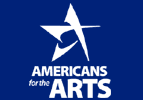 A couple weeks back Thomas Cott published an issue of “You’ve Cott Mail†centered loosely on the theme of innovation and business incubators in the arts world, in which he linked to a post by one of my favorite bloggers/researchers/thinkers, Devon Smith. Devon contrasted the concept of ‘incubator’ in the tech world and the arts world. After reading her post I was curious to read up on technology and business incubators and ask myself what, exactly, arts incubators are incubating and to what end?
A couple weeks back Thomas Cott published an issue of “You’ve Cott Mail†centered loosely on the theme of innovation and business incubators in the arts world, in which he linked to a post by one of my favorite bloggers/researchers/thinkers, Devon Smith. Devon contrasted the concept of ‘incubator’ in the tech world and the arts world. After reading her post I was curious to read up on technology and business incubators and ask myself what, exactly, arts incubators are incubating and to what end?
Devon makes the point that in the tech world it is ‘demo or die’ and that, in contrast, many arts incubators tend to be about process without the expectation of a deliverable on a certain time frame. Devon characterizes it as ‘we’re here to support you in however much you get accomplished for however long you are here’. Beyond the expectation to ‘demo or die’, however, there’s something else I learned in my reading: business incubators, philosophically and practically speaking, perceive themselves to be incubating the entire enterprise. At the end of 33 months (the average amount of time spent in a business incubator) it is expected that the startup can leave the nest with a viable business model and product and fly on its own.
How do these business incubators develop the whole enterprise? Devon talks about this in her post, as well, but I found a couple things particularly interesting. First, while they don’t necessarily provide venture capital, business incubators often serve as brokers and introduce entrepreneurs to venture capitalists, other successful entrepreneurs, or people that have knowledge and skills needed by the startup. Second, a successful tech incubator will provide access to high-end technology, as well as high-level marketing support, comprehensive adminstrative support, and hands-on business planning.
After reading about business incubators it struck me that it seems important to distinguish the purpose of an ‘incubator’ from (1) a one-to-three week ‘workshop’ or ‘residency’, which is meant to give an artist time to further develop a particular project and (2) ‘access to affordable office space, basic equipment, and business classes’ — which seem to be common types of support offered to artists and arts companies. These are not without value; but I would suggest that (particularly when provided by separate hosts) they do not an incubator make, if ‘incubation’ suggests a range of support and services aimed at making a venture viable and launching it into the world with a greater chance at success.
Devon suggests that art incubators seem to be reluctant to hold the groups they are incuabting accountable for success beyond a ‘good process’ and hypothesizes that perhaps arts incubators are ‘too nice, too forgiving’. I wonder whether the laissez faire nature of many arts incubators is a symptom of two things. (1) The rejection for the past 100 plus years of the notion that great art works can be born of a ‘shared vision’ between patron/investor and artist. (2) The widespread belief in the ‘fine arts world’ that ‘being truly artistic, excellent and innovative’ and ‘keeping an eye to the market with the goal of eventually selling the work to a mainstream audience’ are mutually exclusive endeavors.
Yes, it’s important to distinguish between the processes that best support the making or preservation of culture and those that best support its exploitation. But distinguishing between these two processes does not suggest that the two cannot coexist or that we should necessarily reject the latter as a goal if we care about the former.
What is the goal of a successful arts incubator? What should it be? Is it wrong to think that it should be not only about improving the quality of the work but also about discovering avenues by which to exploit it (i.e. derive full value from it) in the marketplace?














